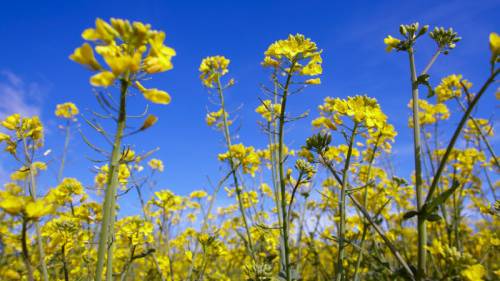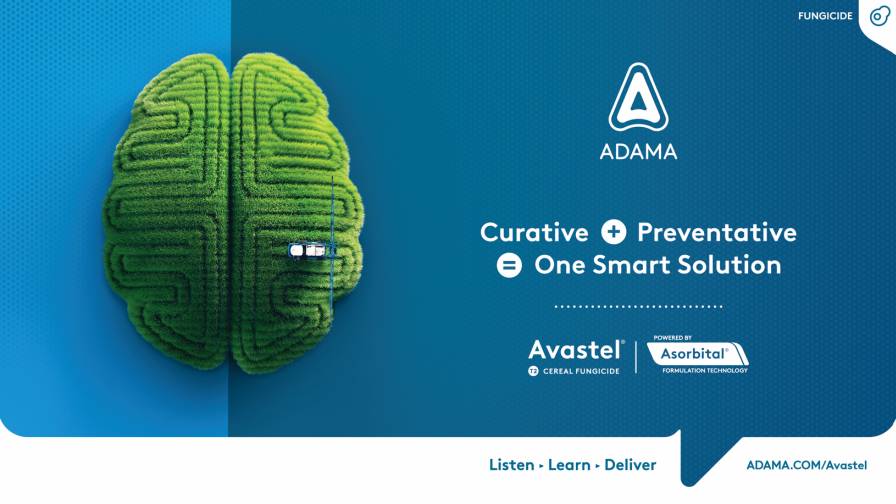Q&A: What BASF’s Latest Foray into Precision Ag Means For Growers

Spencer
In late April, BASF agreed to acquire U.S. precision ag player ZedX, a leader in the development of agronomic weather, crop, and pest models that can rapidly translate data into insights for more efficient agricultural production.
We sat down with Jeffrey Spencer, BASF’s Development Lead for the Digital Farming Group to discuss what the acquisition means for both growers and the German chemical giant.
Can you tell us more about the products being acquired, and are they considered “add-on” products that will fit existing BASF products?
First, maybe a little bit of perspective: What we call digital farming externally – our digital farming brand – is Maglis. We began working on Maglis, and its development and conceptualization in 2013. At that time we started looking for different development partners. Whether it be in the case of ZedX, a partner to deliver modeling and help answer questions for farmers, or suppliers of various data sources. We came into touch with ZedX back then and have been partnered together closely since 2013. As to the question whether it is an add-on to existing solution, ZedX has actually already delivered many different types of solutions to us, and one of those is directly into Maglis. So the types of things you would see are decisions and support tools around crop protection products – how can we best time an application to help make it the most efficient for the grower. That could be weather modeling, it could be crop modeling, or pest and disease modeling, so that’s really where we see that strong fit within Maglis.
Will BASF then be applying the complete portfolio of ZedX products?
ZedX has been in the ag industry, specifically in the area of digital farming, for many years, and they have a lot of different products. Some of them are certainly complementary to ours. We would look to integrate them into our digital farming solutions, such as their crop and pest and disease models. Other solutions they have we would evaluate on a case-by-case basis. They have drift modeling tools, and even their own digital farming platform called AgFleet. We definitely would be acquiring all of those tools and all of the technology they have generated over the past 30-plus years, and look for best places to continue to use it, or, if it’s a direct overlap with one of our tools, maybe we collaborate together based on what we’ve learned on our paths thus far. With AgFleet, which is an example of a farm management or precision farming tool, and Maglis, there’s a good chance we can learn from each other in terms of what we’ve seen in the market and how we can improve.
How important would the drift modeling tool you mentioned considering the new 2,4-D and dicamba technologies debuting?
In addition to programs like our On Target Application Academy, the drift modeling tool has the potential to become another resource from BASF to assist growers with proper and successful application. The tool is still in development, but it helps the growers with the application timing. The tool will look at environmental conditions to make sure that when a grower is making an application they do it the most sustainable way, number one, making sure conditions are ideal for an application. Then number two, the tool will help make sure they get the highest yield benefit. It connects ZedX’s expertise in crop protection together with the application of products, and then looks for the right conditions to ensure a safe application, while also delivering maximum benefit for the grower.
Will BASF begin writing and delivering agronomic recommendations directly to growers via Maglis, or will you use the ZedX integration to enable retail chain partners via Maglis to access the data layers to write recommendations?
We have a few different tools within Maglis. The one we launched last year in the U.S. is called Maglis Customer Navigator. The tool allows our innovation specialists in the U.S. to work together with growers and their preferred partners to create product recommendations. It’s a tool where we’d approach a grower and then work with them to tailor recommendations. We also piloted a tool in Canada called Maglis Crop Plan – this is where we could have a potential opportunity not only for a BASF person to go reach out to one of our growers, but it also enables an option where retailers, agronomists or advisers can also be a part of that discussion. The clear answer is, we are looking at different tools that enable all of the key decision makers that a grower would talk to, whether it be us directly as BASF or somebody else that they may depend upon to help make those decisions – a retailer, agronomist, farm manager, or whomever it may be.
From the growers’ perspective, how do you expect they will receive the integration of ZedX?
They will continue to see it within Maglis, the major outlet that is grower-facing, where we would be able to deliver some of value that ZedX can generate in terms of the best application timing and advice around maximizing yield and ensuring a sustainable farming operation. I don’t think that precludes us from finding other channels where potentially we can leverage the information or the modeling capability with ZedX. We have, of course, collaborations with many different partners within this space, and we would look to find the various outlets that make sense for growers. As one example, we’ve worked with John Deere to develop apps or tools to make product recommendations and spray advice, so that could be one potential way where a customer would maybe see it – through a collaboration like that.
How does this acquisition shift your position as a crop protection company?
I don’t know if it necessarily changes it, but I think it definitely secures the great relationship we’ve had with ZedX over the last three years, and makes sure that we can continue to do what we’ve worked on together, jointly developed, and seen some good results on. But I think we clearly remain open to other interesting collaborations or partnerships as we find them. Our clear focus is on continuing to grow our digital farming tools and being able to offer decision support for our growers.
We know ZedX helps growers with hitting the right application window for a herbicide, for example. How else has this tool helped growers?
We actually had some really good feedback from Canadian farmers we worked with last year. What they were really surprised with was how accurate some of the modeling capabilities were through Maglis Crop Plan. What was in focus there was canola – obviously a big and important crop in the Canadian market. Basically growers gave us the feedback: if we could really know when certain time periods of the key crop growth stages were going to hit, that would really help us do some advance planning and help us target our applications more precisely. That’s where we saw a really positive response last year, and this year we’re going to look for opportunities to have more participants on that type of system so that we can help them identify those window. That’s one small example where we used ZedX’s modeling capabilities and let growers use it in real-world applications over the course of a season, and really plan their decision making based on what the tool could deliver.
Can you talk about your plans to expand these tools internationally?
Absolutely. One of nice thing about ZedX is they do have quite a bit of experience in other key markets, and other key markets which are synergistic to BASF. In fact, we are already doing some work in regions beyond North America. We’re already doing some testing of the ZedX-based systems here in Europe, and potentially going beyond testing to piloting still this year. Also, late last year we did some work in Asia with India. That’s really a nice fit between BASF and ZedX. Even though ZedX is based out of North America and that’s clearly where they have a lot of experience, they are not limited to just North America. I think we’re just now starting to see that come to life with some of these things we’re doing in Europe and Asia.
Any last thoughts on the services growers will receive specific to this new offering?
I think the way a grower would see it is mostly through the outlet of our digital farming platform, Maglis. I think we’re just really excited to look to the opportunities we can create together. The team of ZedX has done a great job over the last 30 years, and I think they’re also quite excited about what potential they can see in terms of getting their solutions into the hands of more growers, and helping farmers make better informed decisions.






